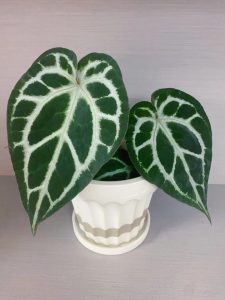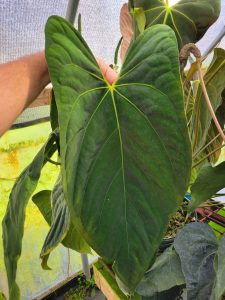- English
- Chinese
- French
- German
- Portuguese
- Spanish
- Russian
- Japanese
- Korean
- Arabic
- Irish
- Greek
- Turkish
- Italian
- Danish
- Romanian
- Indonesian
- Czech
- Afrikaans
- Swedish
- Polish
- Basque
- Catalan
- Esperanto
- Hindi
- Lao
- Albanian
- Amharic
- Armenian
- Azerbaijani
- Belarusian
- Bengali
- Bosnian
- Bulgarian
- Cebuano
- Chichewa
- Corsican
- Croatian
- Dutch
- Estonian
- Filipino
- Finnish
- Frisian
- Galician
- Georgian
- Gujarati
- Haitian
- Hausa
- Hawaiian
- Hebrew
- Hmong
- Hungarian
- Icelandic
- Igbo
- Javanese
- Kannada
- Kazakh
- Khmer
- Kurdish
- Kyrgyz
- Latin
- Latvian
- Lithuanian
- Luxembou..
- Macedonian
- Malagasy
- Malay
- Malayalam
- Maltese
- Maori
- Marathi
- Mongolian
- Burmese
- Nepali
- Norwegian
- Pashto
- Persian
- Punjabi
- Serbian
- Sesotho
- Sinhala
- Slovak
- Slovenian
- Somali
- Samoan
- Scots Gaelic
- Shona
- Sindhi
- Sundanese
- Swahili
- Tajik
- Tamil
- Telugu
- Thai
- Ukrainian
- Urdu
- Uzbek
- Vietnamese
- Welsh
- Xhosa
- Yiddish
- Yoruba
- Zulu
- Kinyarwanda
- Tatar
- Oriya
- Turkmen
- Uyghur

Araceae family of plants includes the genus Anthurium, also known as flower candle or red goose palm. Because of its vivid colors, lengthy blossoming duration, and great decorative value, flower aficioners mostly like it.

Anthurium
Anthurium’s botanical properties
appearance traits
Anthurium has heart-shaped leaves and inflorescences among other appearance traits. Usually dark green, smooth and lustrous, the leaves have obvious veins. Bracts and spadixes comprise the inflorescence. Usually vivid red, the bracts can come in pink, white, green, and other colors. Usually yellow or white, the spadix is columnar or rod-shaped.
Behavior patterns for development
Native to tropical rainforest locations and suited for damp and warm surroundings, anthurium is a perennial evergreen plant. Appropriate for grown in well-drained soil, it develops quickly and has a well-developed root system. Avoiding direct sunlight, anthurium enjoys shade and is fit for growing in dispersed light or semi-shaded conditions.
Conditions for growing anthurium
Light Anthurium likes strong indirect light and should be planted on an east-facing or west-facing windowsill so it may have morning or evening mild sunshine. Shade a too intense light using a shade net or curtain to avoid leaf burning.
Temperature: Anthurium development calls for a temperature between 18 and 28 degrees Celsius; lowest winter temperatures shouldn’t be less than 10 degrees Celsius. A too low temperature will lead to even frost damage and growth stagnation. Summer’s high temperatures need for careful consideration of ventilation and cooling to maintain an appropriate temperature for the surroundings.
Hygiene
Anthurium has strong air humidity needs; the ideal humidity is more than 60%. The decorative impact might be affected by the easy drying out of the leaf margins in a dry surroundings. Using a humidifier, watering more often, or setting the plant on a tray covered with water and stones can help you raise the air humidity.
Anthurium therefore likes well-drained soil high in organic materials. To preserve the air permeability and suitable moisture of the soil, it is advised to combine a matrix of peat soil, perlite and bark. Frequent loosening of the soil facilitates root system breathing and growth.
Anthurium maintenance issues
Although there is great need for water for anthurium, try not to cause waterlogging. Usually, water once a week to maintain the soil top somewhat wet. Summer’s high temperatures call for more watering frequency; in winter, this should be lowered suitably. To avoid water stains and infections, be cautious not to water directly on the leaves and inflorescences.
Fertilization:
Anthurium requires enough nutrients throughout the season of growth. Once a month it is advised to use either special anthurium fertilizers or balanced fertilizers. To avoid fertilizer damage, steer clear of too much fertilizing. When winter’s poor growth calls for less fertilizing, cut the frequency.
Pruning:
Frequent trimming of the dead leaves, yellow foliage, and aged inflorescences of Anthurium helps to maintain the plant in good condition. When cutting, sanitized scissors help to prevent bacterial contamination.
Pest and disease management
Diseases include root rot and leaf spot may afflict anthurium. Maintaining excellent ventilation and suitable humidity can help to prevent infections; avoid waterlogging and too humid surroundings as well. Once the illness is discovered, the affected area should be isolated in time and treated to suitable fungicides. Common pests include aphids, red spiders, etc.; frequent examination and pesticide application help to manage them.
Anthurium growing techniques
Division development
The most often used technique for proliferation of Anthurium is division. The baby plants developing around the mother plant are split and placed in a fresh culture media in spring or fall. Maintaining appropriate humidity and a warm surroundings will facilitate the development of fresh plants.
Tissue cultures
Advanced propagation technique is tissue culture. After the tissue of Anthurium produces a whole plant, it is cultivated in a sterile manner on a culture media and then transplanted into the ground. Although technical criteria are stringent, tissue culture can guarantee the purity and good development of the plant.
Different kinds of anthurium and uses
variances
Though there are other variations and versions for anthurium, red, pink, white, and green are the most often used ones. varied types fit for varied decorative purposes based on their bract colors and leaf forms.
Indoor decorating
Because of its brilliant color and elegant leaf form, anthurium is a common interior design accent. Desktop plants, flower bed decorations, or potted plants may be arranged on windowsills, living rooms or workplaces to boost the energy and attractiveness of the environment.
Florical Design
Another somewhat often used element in flower design is anthurium. In bouquets, flower baskets, and floral designs, its unusual form and lengthy blooming period emphasize aspect. Appropriate for many floral projects, the bracts of anthurium may keep vivid hues for a long time.
Anthurium’s cultural and symbolic aspects
Symbolic Interpretation
In floral language, anthurium represents in honesty, love, and pleasure. Often presented as presents to friends and family to convey good wishes, its brilliant crimson bracts stand for love and camaraderie.
cultural background
Anthurium is seen as a lucky plant in several civilizations, suggesting family peace and seamless career. Its sophisticated look and strong symbolic value make it quite popular during holidays and significant events.
Anthurium Air Purification’s Environmental Value
Anthurium may help to enhance indoor air quality by absorbing pollutants such formaldehyde and benzene from the surroundings. An indoor plant, anthurium not only accents the surroundings but also provides fresh air for businesses and residences.
Ecological preservation
Growing and spreading anthurium helps to preserve the natural surroundings. By means of artificial propagation and culture, the strain on the procurement of wild anthurium resources is lessened, therefore preserving the tropical rainforest ecology.

Anthurium Clarinervium
Because of its distinctive look and rich symbolic value, anthurium is quite prominent in flower design and interior décor. The decorative value and growth quality of anthurium may be greatly enhanced by knowing its fundamental traits and development patterns as well as by learning its care aspects. Anthurium may provide the area natural beauty and pure air whether it is in the house, business, or yard. By means of scientific management and meticulous care, anthurium will exhibit its finest condition and provide people with long-lasting beauty and delight.
Previous News
Special requirements for the growth environment...Next News
The basic characteristics of begonia and its ma...


